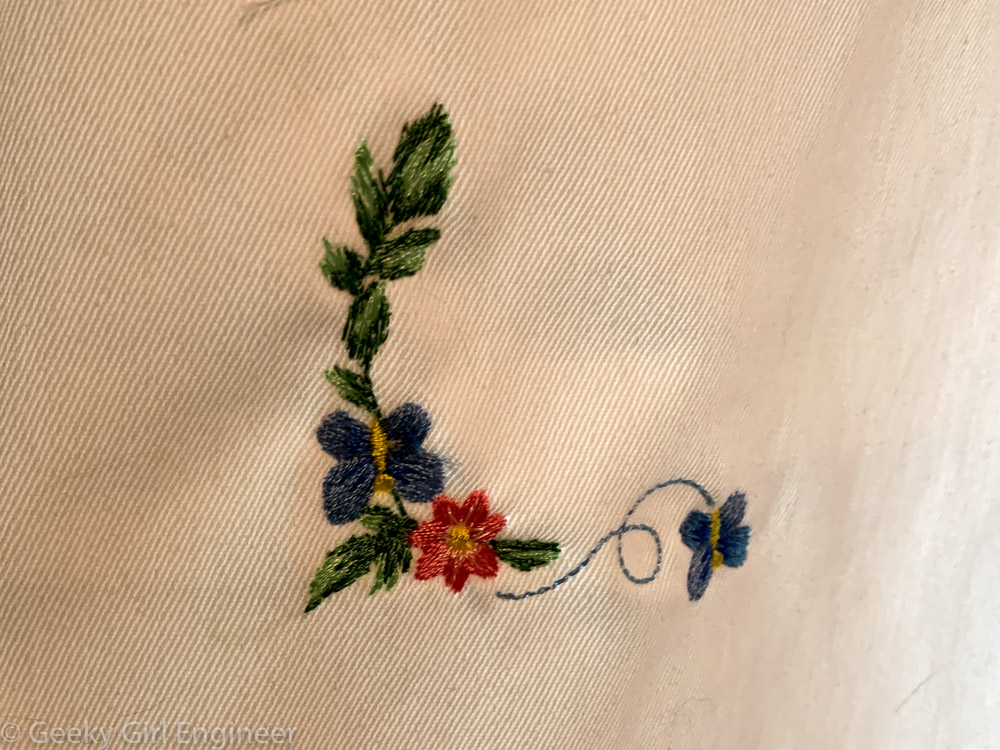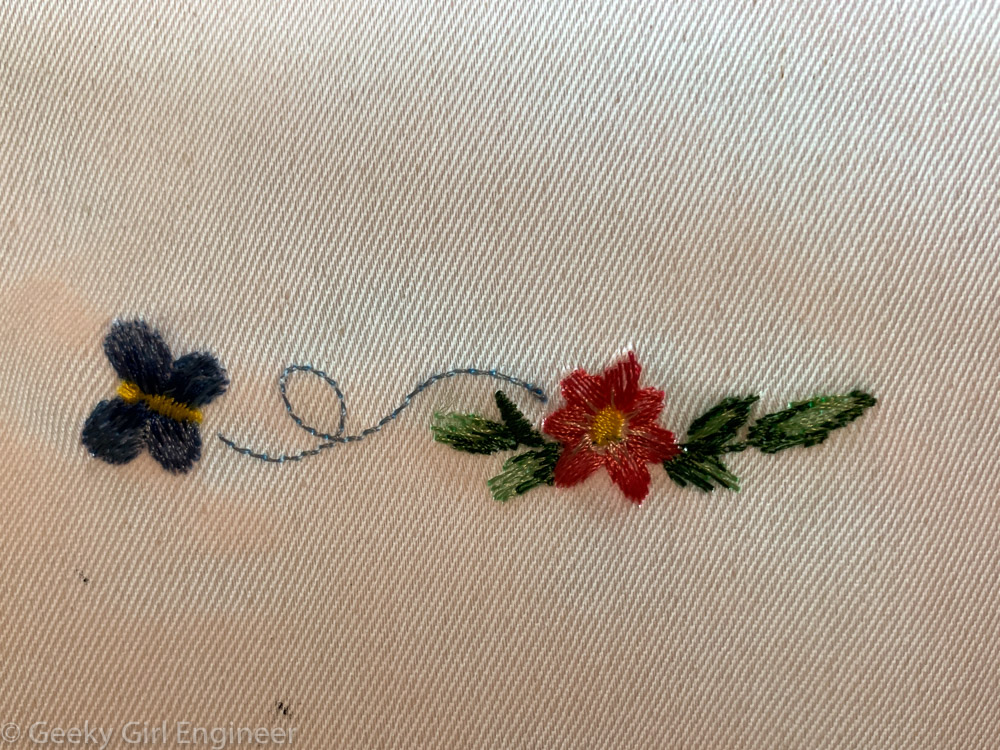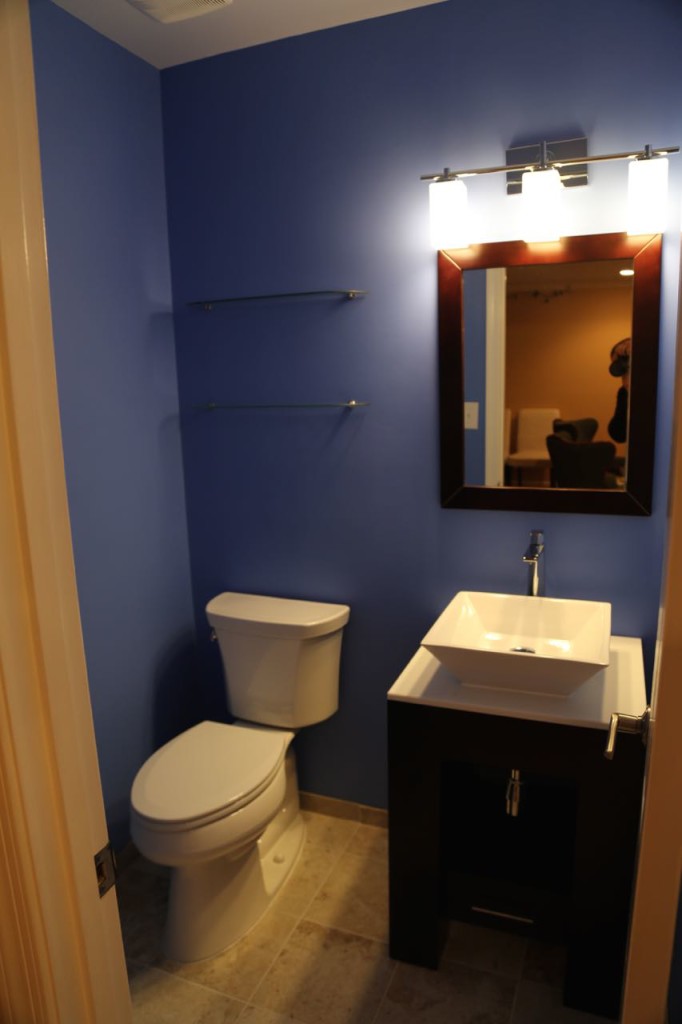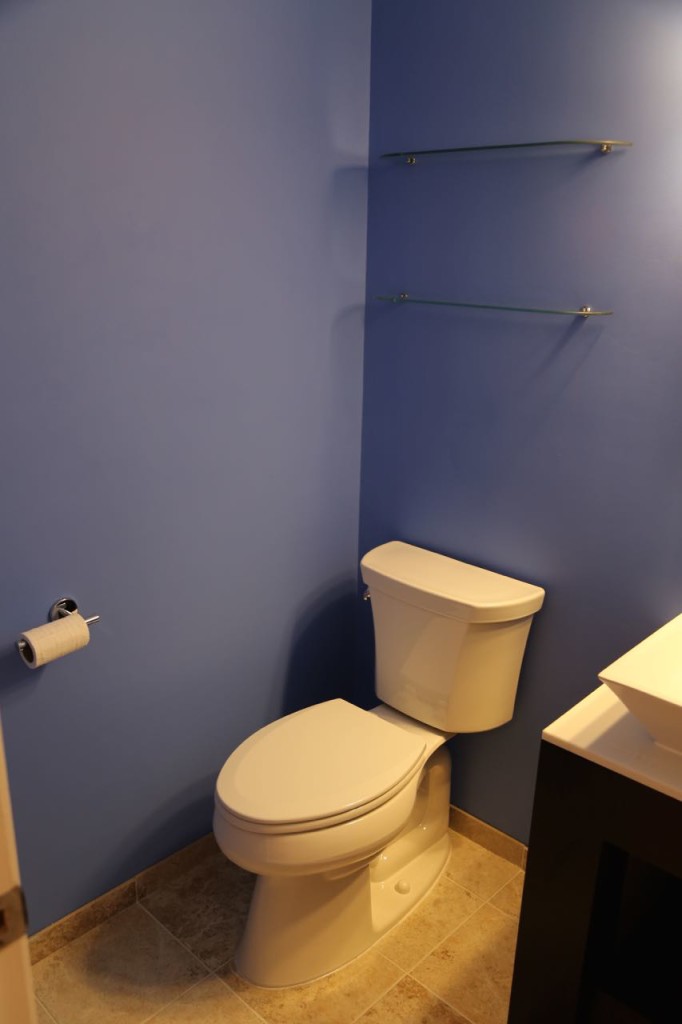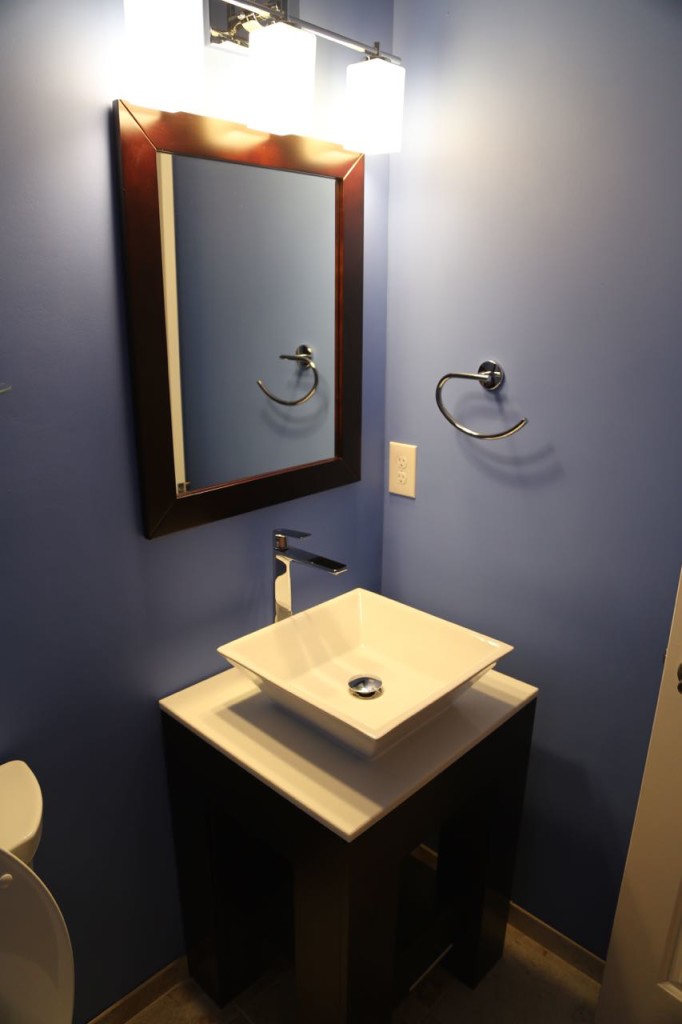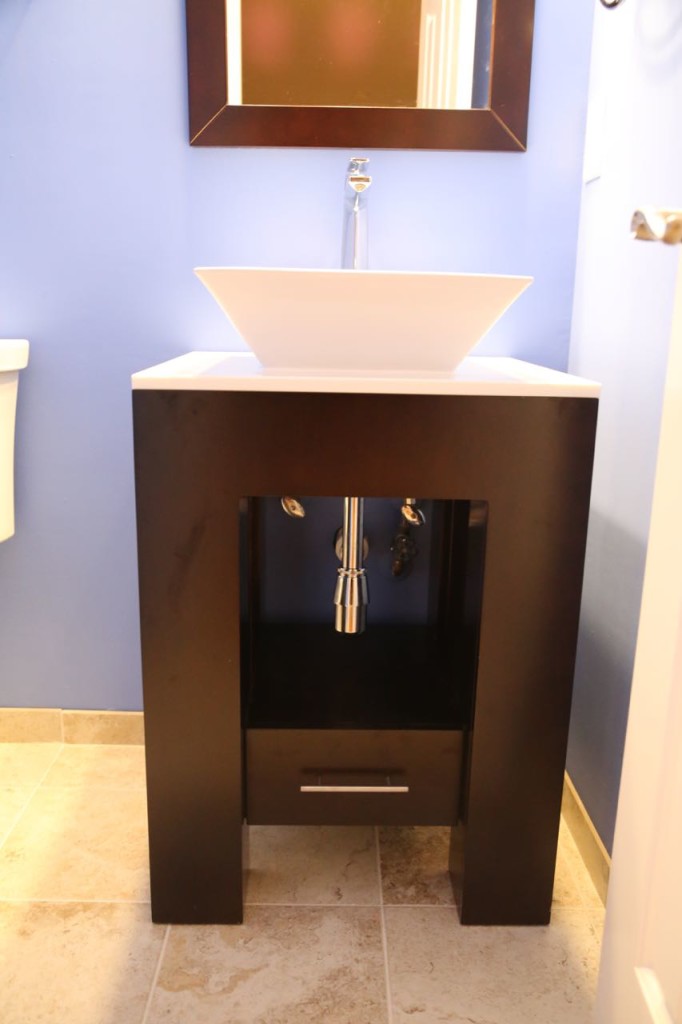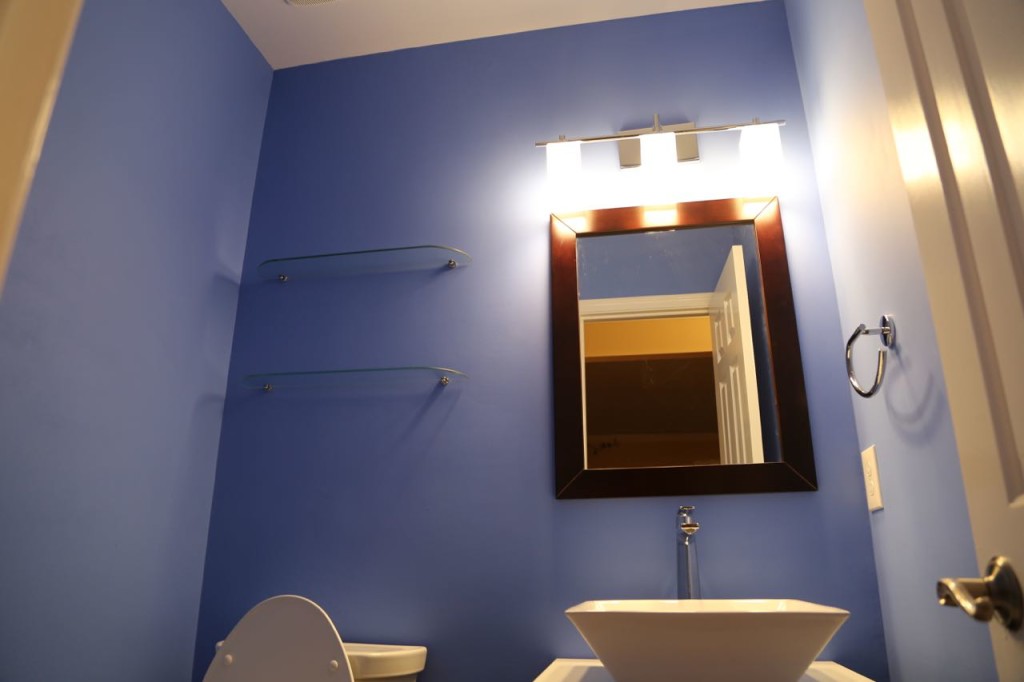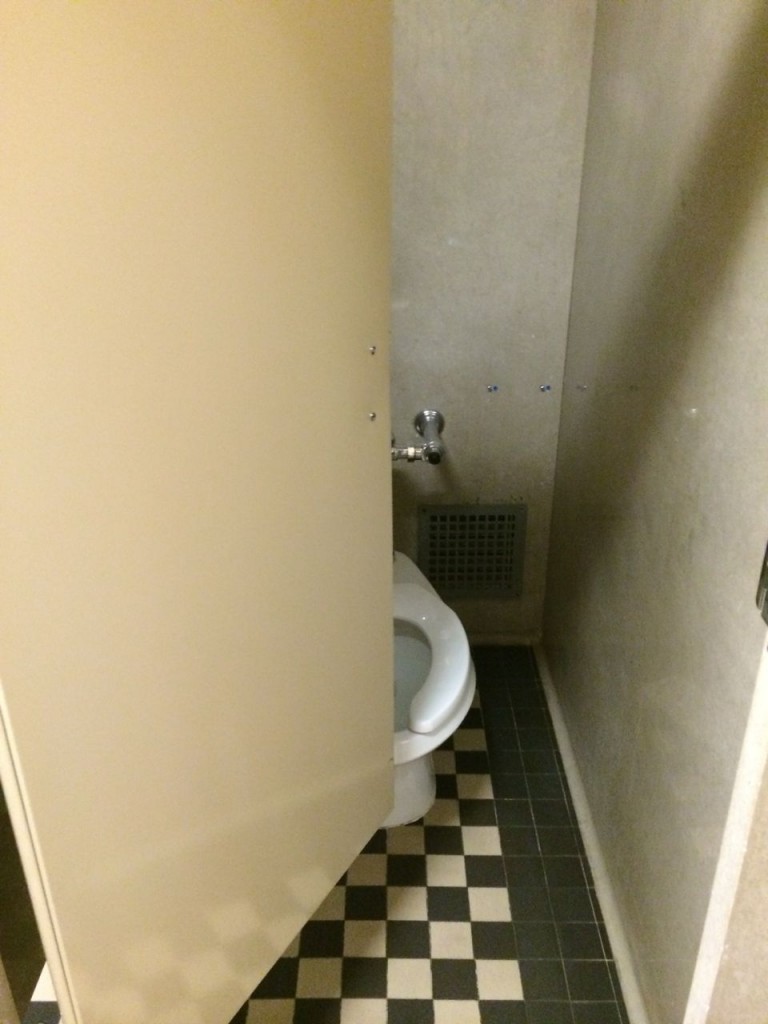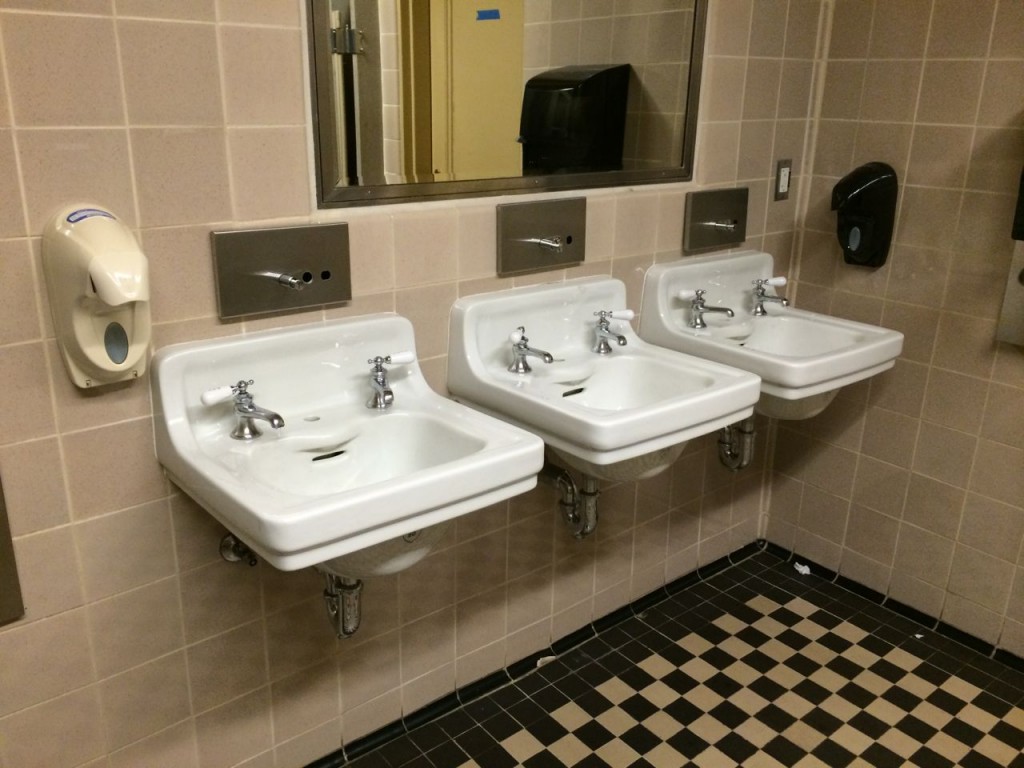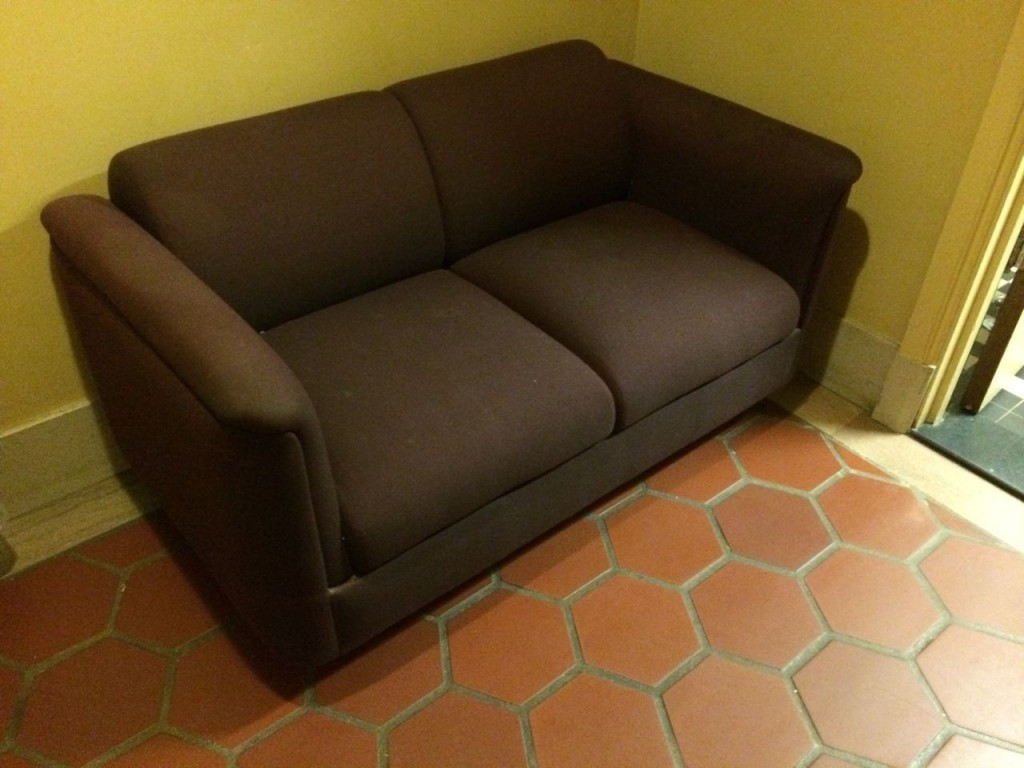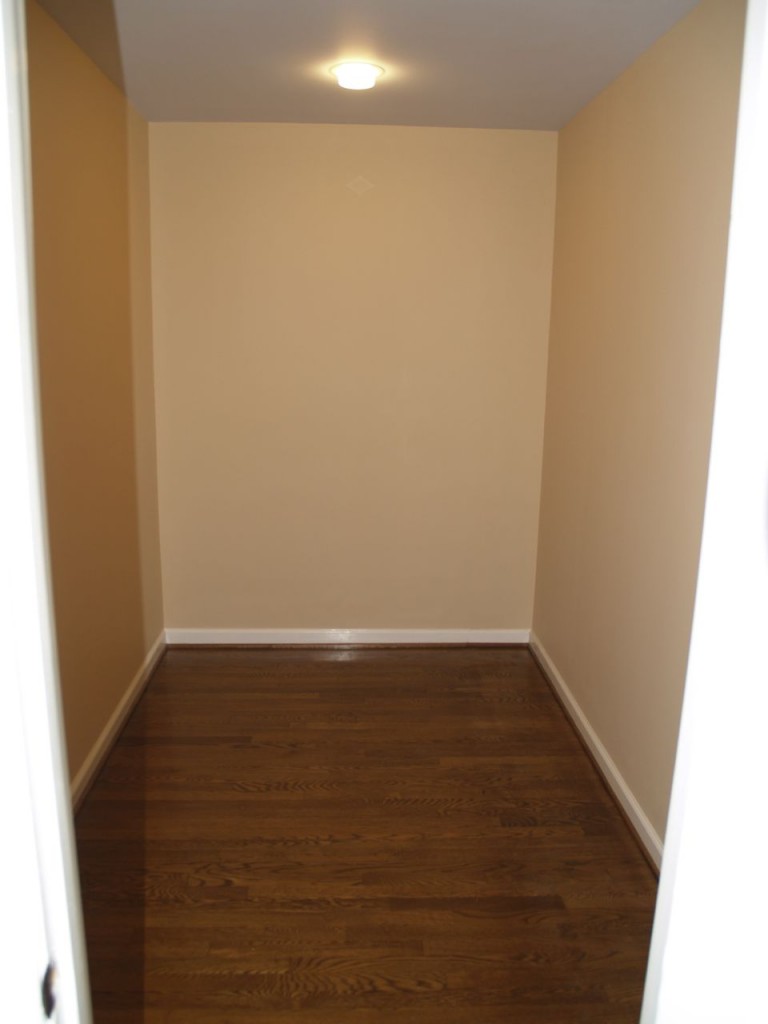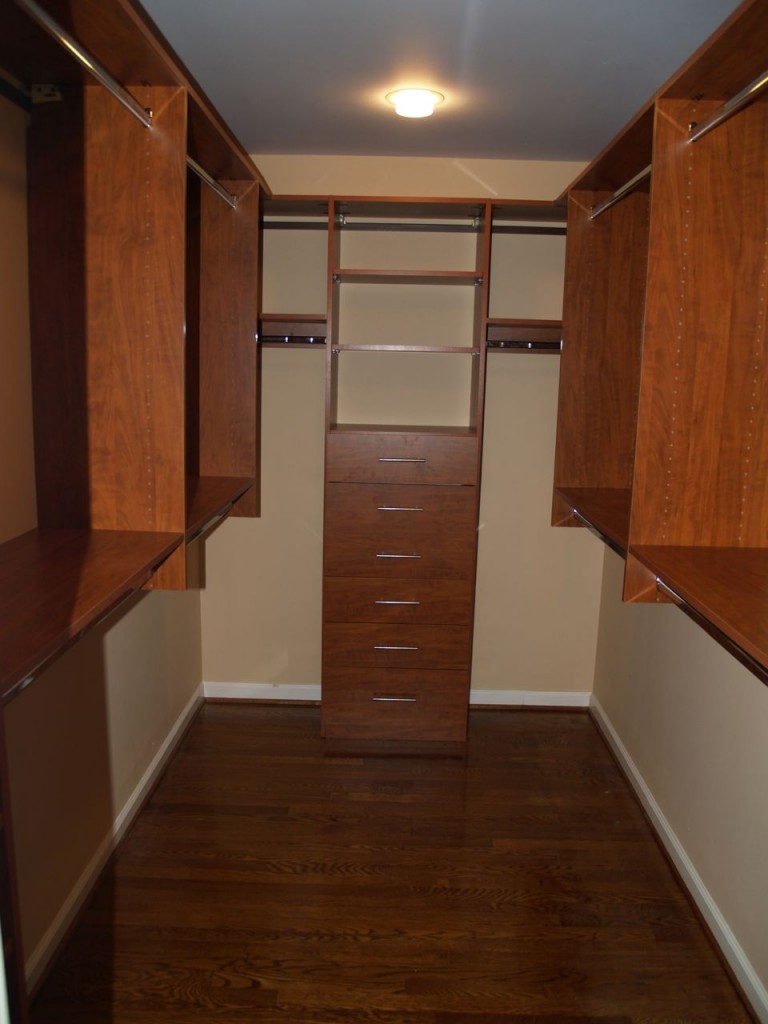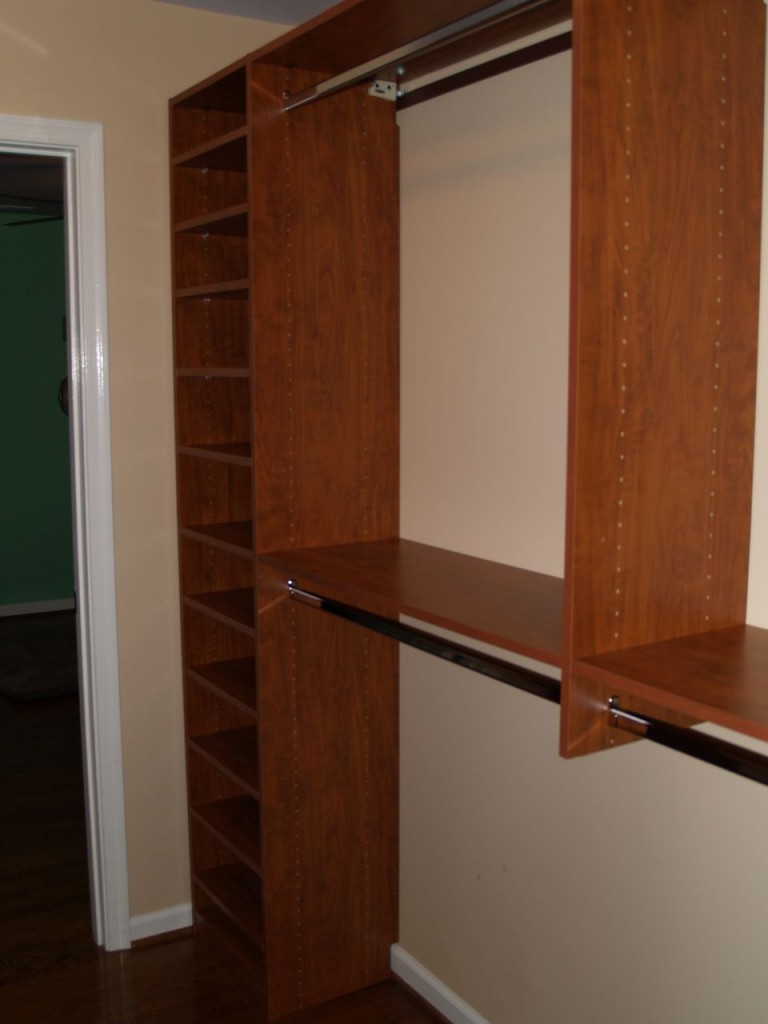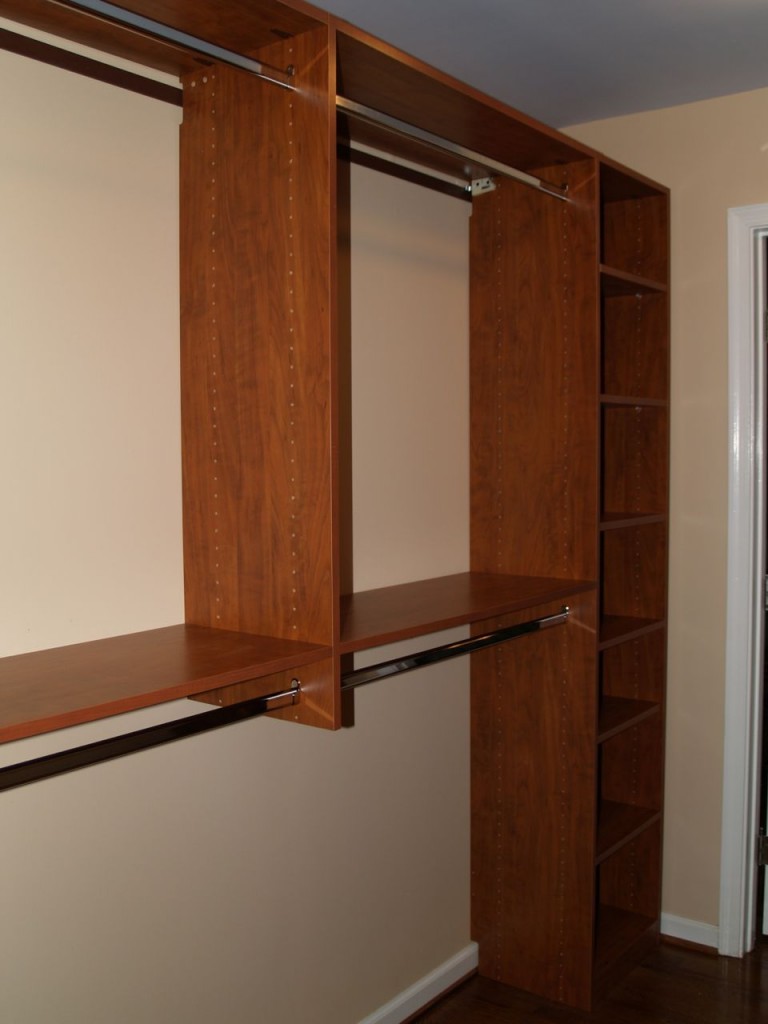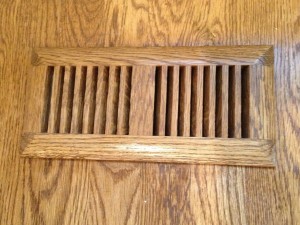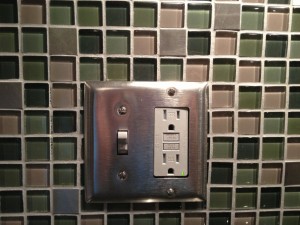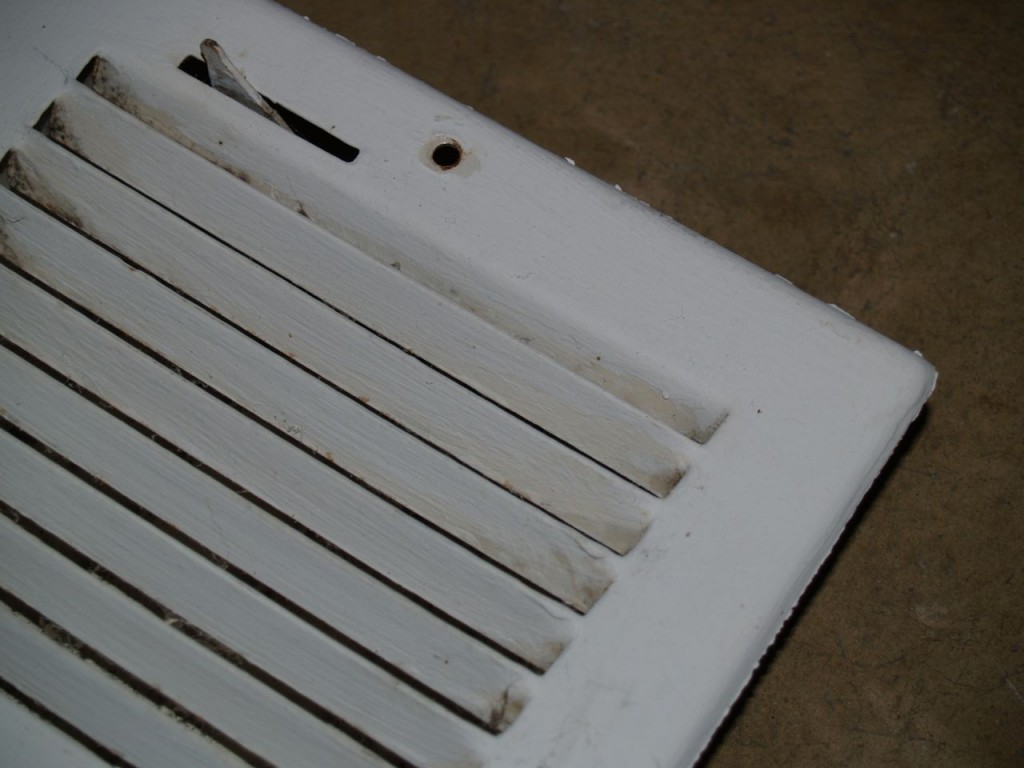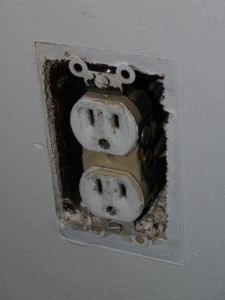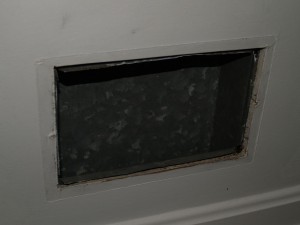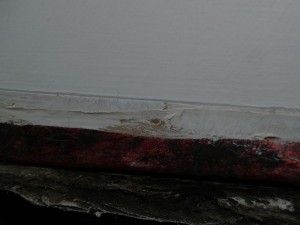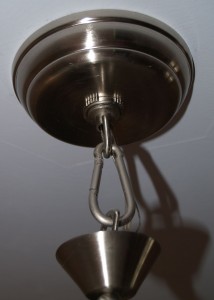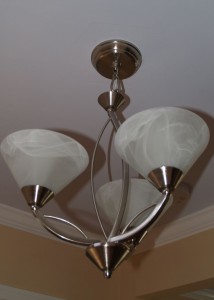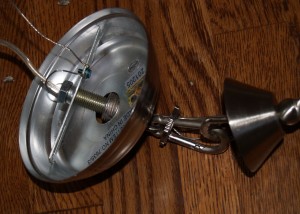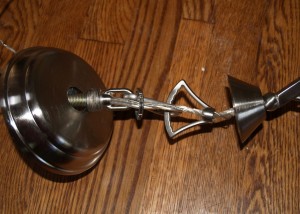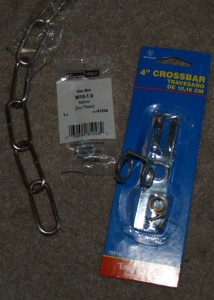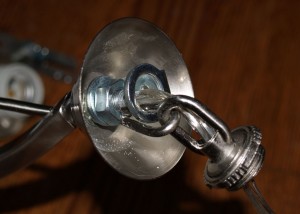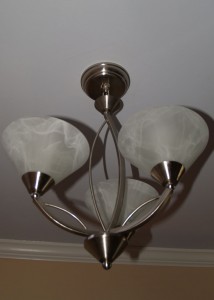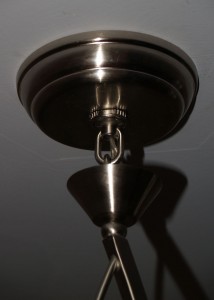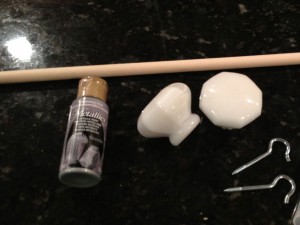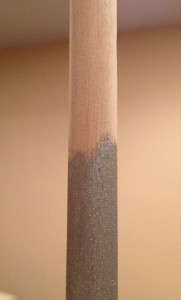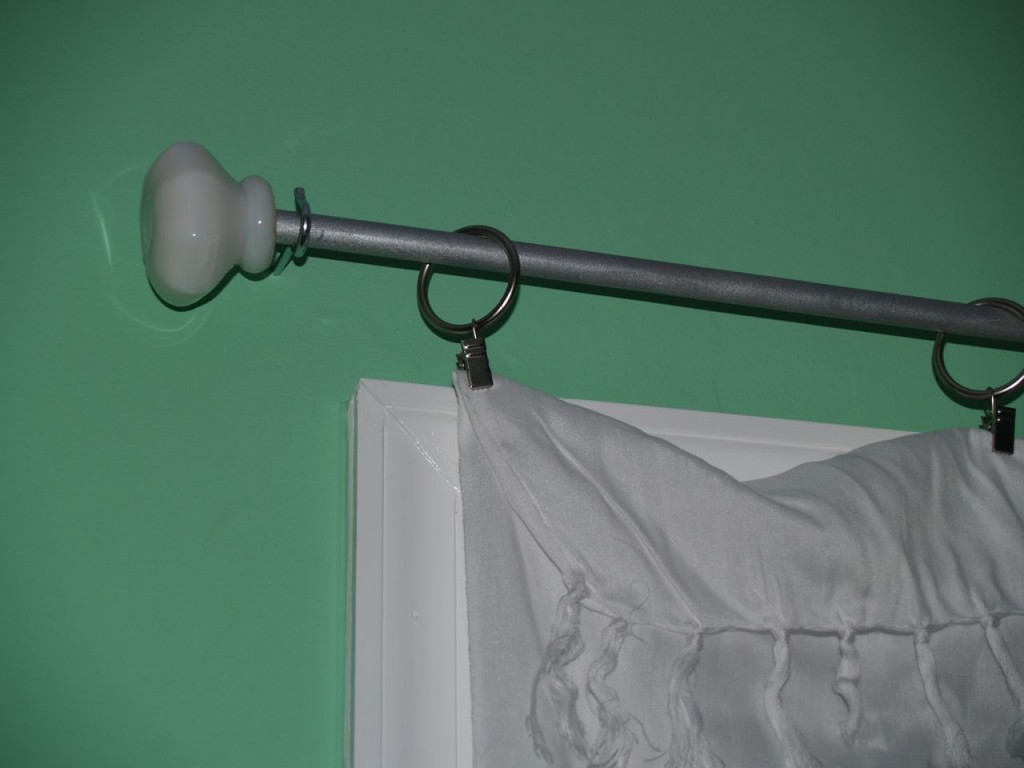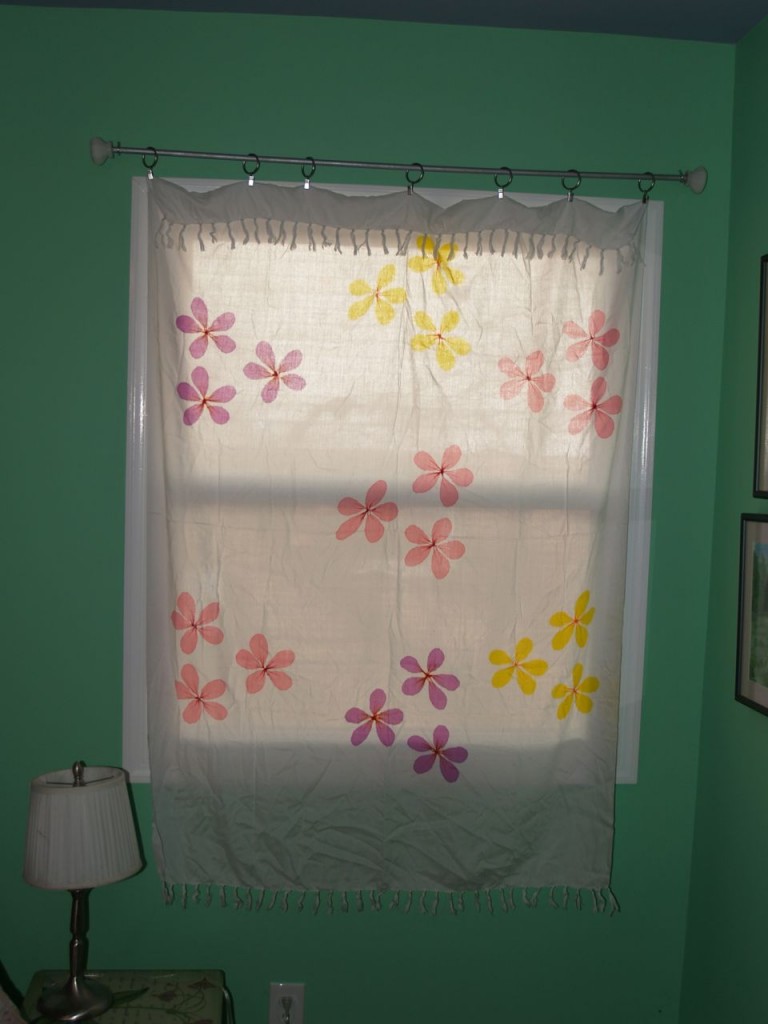I finally finished a project I have been wanting to do for about a year now. In my master bathroom, I had a store bought, plain white, Roman shade. It did its job, but I really did not like it for a multitude of reasons. I wanted to make a curtain for the window instead. Since last year I bought a fancy new sewing machine that does embroidery, I decided to use that to make a simple curtain into something not so simple.
The curtain is made of white denim. I choose this material because it lets in light while giving me privacy. I sewed a simple rectangle a bit bigger than the window. I then sewed simple tabs to hang it from a very simple rod I bought at IKEA. I had to use really simple finals as there is not a lot of room in between the window and the shower on the left and door to the water closet on the right. Then to make the curtain fancier, I bought a collection of machine embroidery floral border patterns. I sewed several corner and border patterns around the curtain’s perimeter. Then all I had to do was hang the curtain. I really like how the curtain looks. It is perfect for my bathroom.




